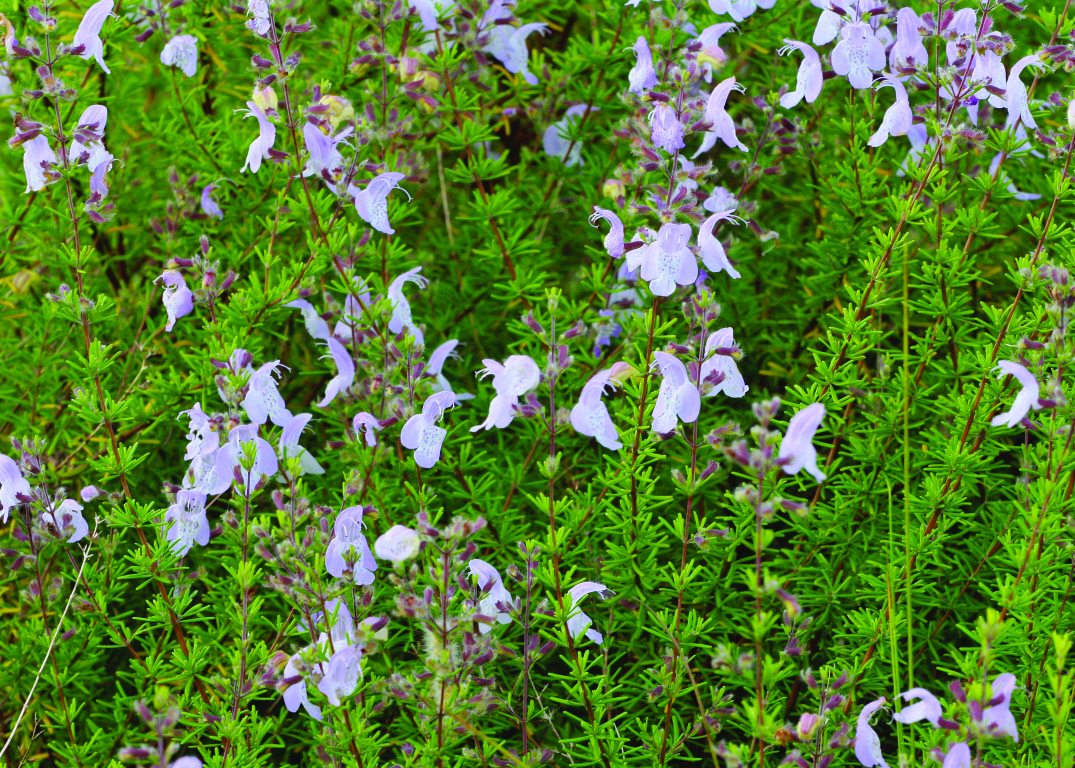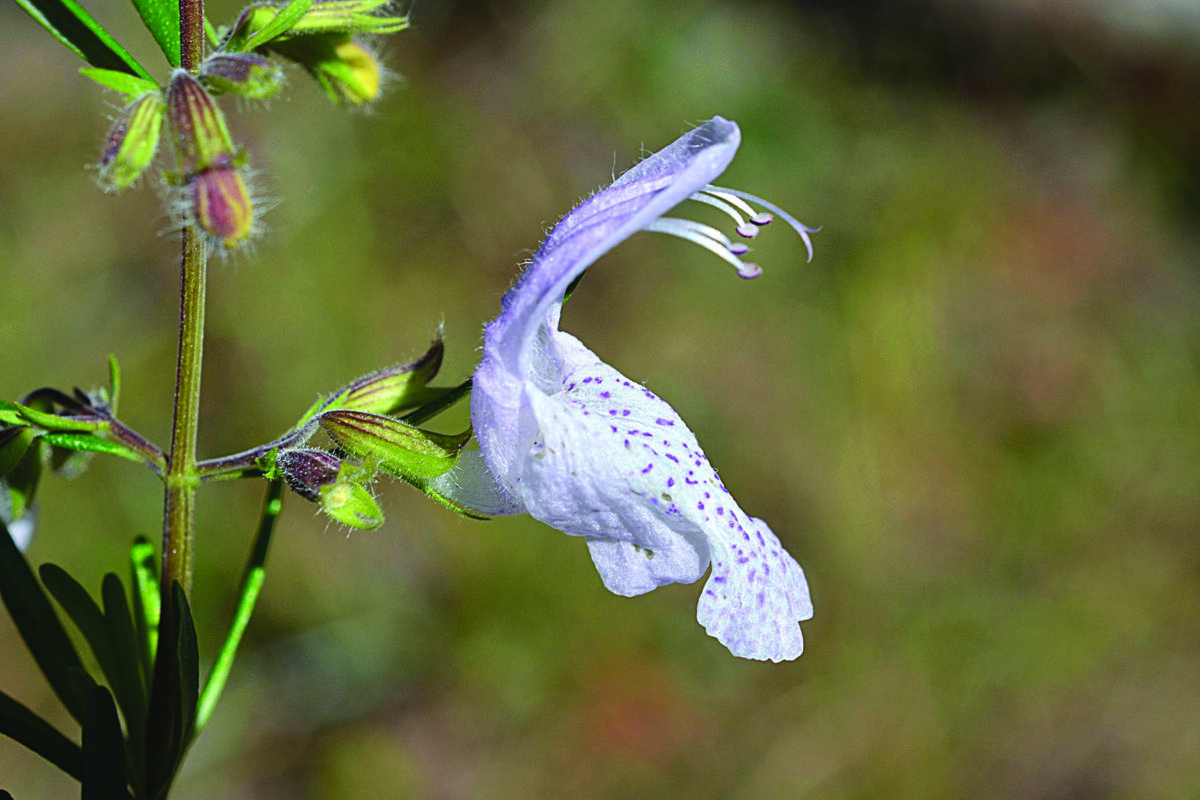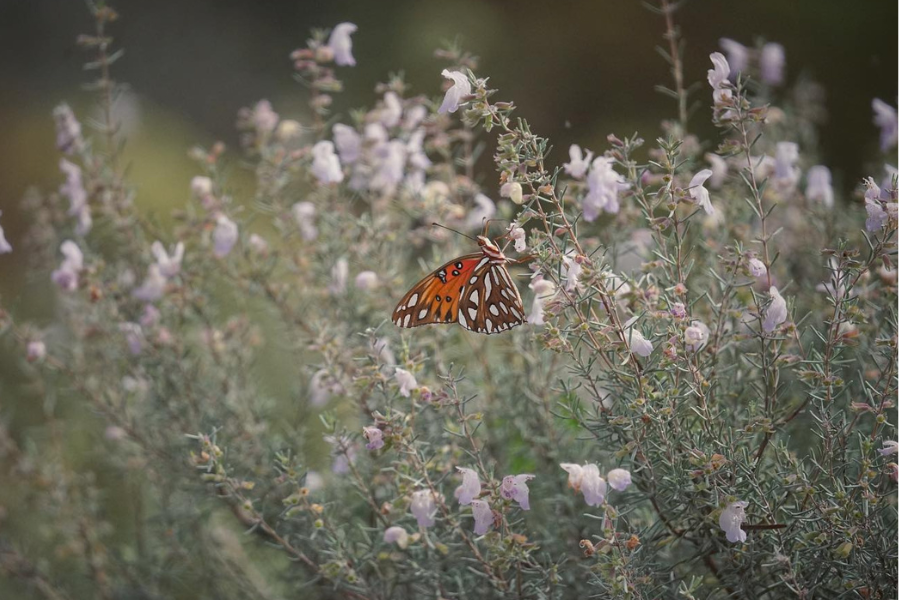Largeflower false rosemary
Pictured above: Largeflower false rosemary (Conradina grandiflora) by Mary Keim. Click on terms for botanical definitions. View post as a PDF.
Largeflower false rosemary (Conradina grandiflora) is an endemic and state-threatened wildflower that occurs naturally in scrub habitats along the east coast of Central and South Florida. Its abundant blooms attract a variety of pollinators, especially native bees.
Flowers are purplish white and two-lipped; the lower lip is three-lobed and bears dark purple spots. Stamens are prominent and run along the inside of the upper lip. Sepals are fused and finely pubescent. Leaves are short and needlelike with a silvery-green hue. They grow densely from upright stems that branch from a main woody stem.
False rosemary plants may look like their namesake cousin, whose leaves are used as a savory cooking spice, but these members of the mint family emit a minty-fresh smell when their leaves are crushed.
Of the six Conradina species in the state, all but C. canescens are endangered or threatened and thus limited in population. Because these species can hybridize, it is important to plant the species found naturally in your area to help preserve the distinct genetic identities and ecological roles of these plants. Largeflower false rosemary is only appropriate for use in counties along the east coast of Central and South Florida.
Family: Lamiaceae (Mint family)
Native range: Coastal counties in the central and southern peninsula
To see where natural populations of Largeflower false rosemary have been vouchered, visit florida.plantatlas.usf.edu.
Lifespan: Perennial
Soil: Dry, well-drained, sandy soils
Exposure: Full sun
Growth habit: 2-3’ tall and wide
Propagation: Seed, cutting
Florida regions of landscape suitability: Central, South
Garden tips: Largeflower false rosemary can be used in mass plantings, as a single specimen, or in a pot. It is very drought resistant once established. Conradina thrives on natural rainfall. If your landscape is irrigated on a regular basis, look for a spot that remains dry.
Plants are occasionally available from nurseries that specialize in Florida native plants. Visit www.PlantRealFlorida.org to find a nursery in your area.
Learn more about Largeflower false rosemary from the Florida Native Plant Society and the Institute for Regional Conservation.
For information on other Conradina species, see these resources:



